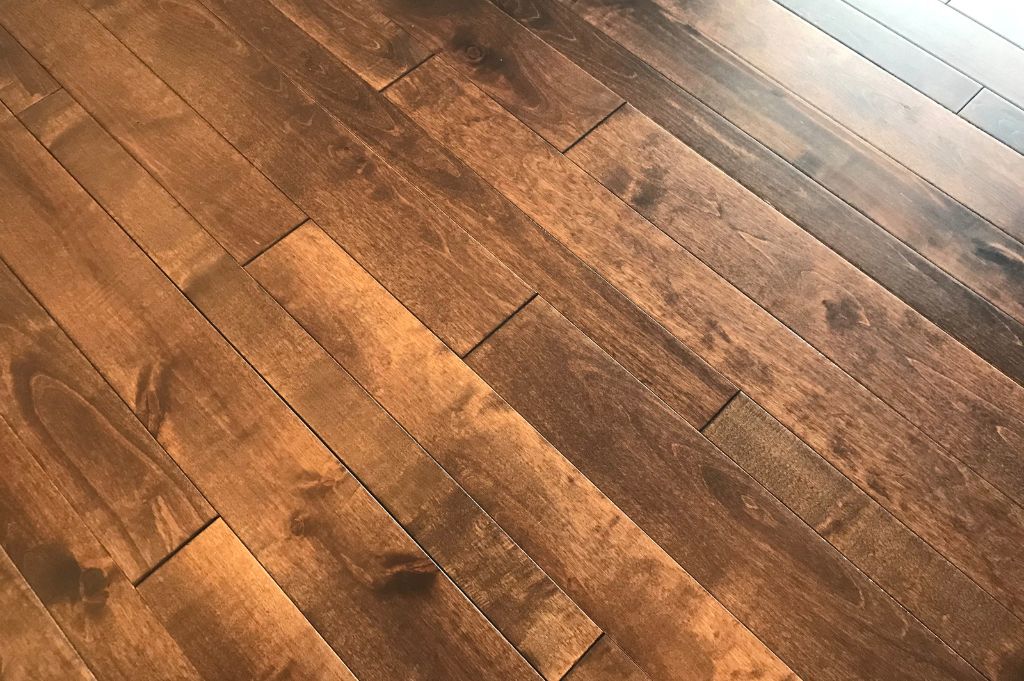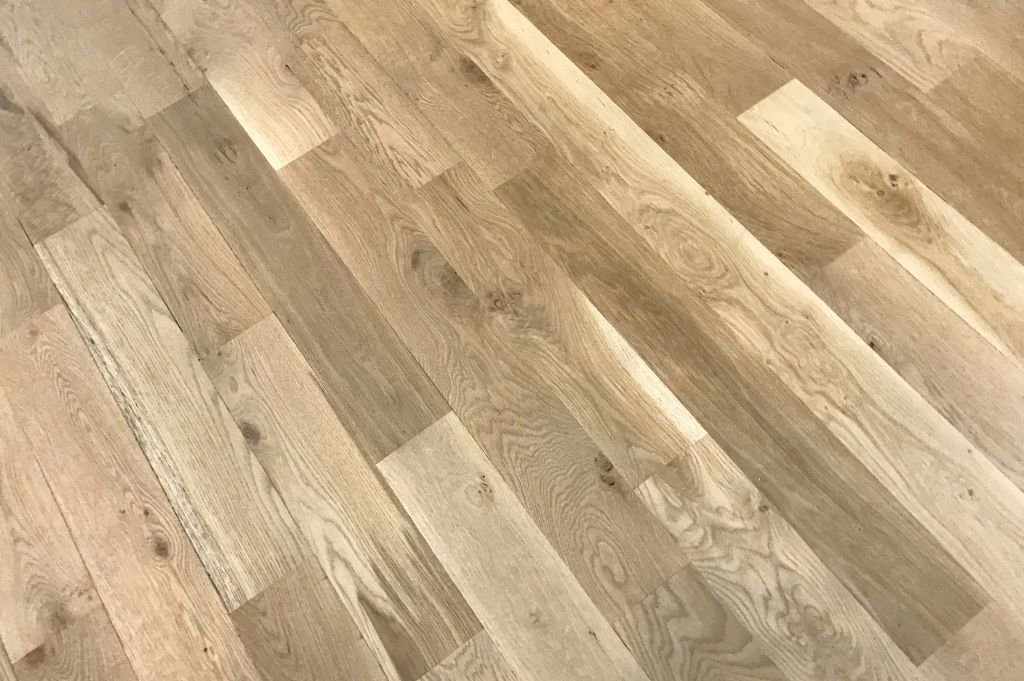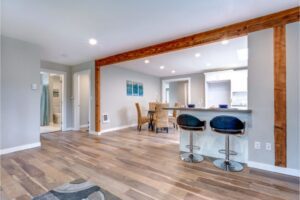When it comes to selecting the perfect flooring for your home, the choice between hardwood and engineered hardwood flooring can be a daunting task. Both options offer unique benefits and considerations, making it essential to delve deeper into their disparities to make an informed decision that aligns with your lifestyle and preferences.
Composition of Hardwood vs Engineered Hardwood Flooring
Hardwood: Hardwood flooring is crafted from 100% natural wood, boasting timeless elegance and authenticity. Each plank showcases the unique grain patterns and characteristics of the chosen wood species, enhancing the aesthetic appeal of any space.
Engineered Hardwood: Engineered hardwood flooring consists of multiple layers of plywood or high-density fiberboard, topped with a thin veneer of real hardwood. This layered construction provides enhanced stability and resistance to moisture, making it an attractive option for areas prone to humidity fluctuations.
Durability of Hardwood vs Engineered Hardwood Flooring
Hardwood: Renowned for its longevity, hardwood flooring can withstand decades of wear and tear with proper care and maintenance. Its solid wood construction allows for refinishing multiple times, ensuring a fresh and rejuvenated appearance throughout its lifespan.
Engineered Hardwood: While engineered hardwood offers comparable durability to solid hardwood, its ability to withstand refinishing is limited due to the thinness of the hardwood veneer layer. However, advancements in manufacturing techniques have resulted in engineered hardwood products with improved durability and longevity.

Hardwood vs Engineered Hardwood Flooring – Nadine Floors
Ease of Installation for Hardwood vs Engineered Hardwood Flooring
Hardwood: Installing hardwood flooring requires precision and expertise, often necessitating professional assistance to achieve optimal results. Whether opting for nail-down, staple-down, or glue-down installation methods, meticulous attention to detail is paramount to ensure a seamless finish.
Engineered Hardwood: Engineered hardwood offers greater flexibility in installation, allowing for a variety of methods including floating, glue-down, or nail-down techniques. With interlocking tongue-and-groove systems or click-lock mechanisms, engineered hardwood can be installed with relative ease, making it a suitable option for DIY enthusiasts.
Versatility in Material Selection: Hardwood vs Engineered Hardwood Flooring
Hardwood: With a vast array of wood species available, hardwood flooring offers unparalleled versatility in design and aesthetics. From classic oak and maple to exotic species such as Brazilian cherry and teak, homeowners can select the perfect wood type to complement their interior décor style.
Engineered Hardwood: Engineered hardwood inherits the diverse selection of real wood species, offering homeowners the opportunity to achieve the look of solid hardwood with added stability and versatility. Whether seeking a traditional or contemporary design, engineered hardwood provides endless possibilities for customization.
Areas of Use: Comparing Where Hardwood vs Engineered Hardwood Flooring Thrive
Hardwood: Hardwood flooring is suitable for most areas of the home, including living rooms, bedrooms, and dining rooms, where its warmth and natural beauty can be fully appreciated. However, precautions must be taken in moisture-prone areas such as kitchens and bathrooms to prevent potential damage.
Engineered Hardwood: Engineered hardwood is an excellent choice for areas with fluctuating humidity levels, such as basements and areas with radiant heating systems. Its layered construction provides increased resistance to moisture, making it a durable and practical flooring option for various residential and commercial settings.
Resale Value: Impact of Hardwood vs Engineered Hardwood Flooring on Property Value
Hardwood: The enduring appeal of hardwood flooring can significantly enhance a home’s resale value, attracting potential buyers with its timeless charm and durability. Homes featuring hardwood flooring often command higher prices and shorter time on the market, making it a worthwhile investment for homeowners.
Engineered Hardwood: With its real hardwood surface, engineered hardwood flooring retains comparable resale value to solid hardwood, offering homeowners a valuable asset that enhances the overall appeal and marketability of their property.
Maintenance Requirements: Care and Upkeep for Hardwood vs Engineered Hardwood Flooring
Hardwood: To maintain the beauty and longevity of hardwood flooring, regular maintenance is essential. This includes sweeping or vacuuming to remove debris, using a damp mop for occasional cleaning, and promptly addressing spills to prevent staining or water damage.
Engineered Hardwood: Engineered hardwood requires similar maintenance to solid hardwood, including routine cleaning and maintenance to preserve its appearance and integrity. Avoid using harsh cleaning products or excessive moisture, as these can damage the wood veneer or compromise the adhesive layers.

Hardwood vs Engineered Hardwood Flooring – Nadine Floors
Aesthetic Appeal: Design Options and Styles for Hardwood vs Engineered Hardwood Flooring
Hardwood: Hardwood flooring offers timeless elegance and versatility, with a wide range of finishes, stains, and textures to suit any design aesthetic. Whether you prefer the rich, warm tones of walnut or the classic beauty of oak, hardwood flooring provides endless possibilities for customization.
Engineered Hardwood: Engineered hardwood flooring mirrors the natural beauty of solid hardwood, offering a diverse selection of finishes and styles to complement any interior design scheme. From sleek and modern to rustic and traditional, engineered hardwood provides homeowners with the flexibility to achieve their desired look without compromising on durability or performance.
Cost Comparison
Hardwood: While hardwood flooring tends to have a higher upfront cost compared to other flooring options, it offers excellent long-term value due to its durability and timeless appeal. Homeowners can expect to recoup a significant portion of their investment through increased property value and prolonged lifespan.
Engineered Hardwood: Engineered hardwood typically falls within a more budget-friendly price range compared to solid hardwood, making it an attractive option for cost-conscious homeowners. Although initial installation costs may be lower, it’s essential to consider long-term maintenance and refinishing expenses when evaluating overall affordability.
Conclusion: Making the Informed Decision Between Hardwood vs Engineered Hardwood Flooring

Hardwood vs Engineered Hardwood Flooring – Nadine Floors
In conclusion, the choice between hardwood and engineered hardwood flooring ultimately boils down to personal preferences, lifestyle factors, and budget considerations. While both options offer unique benefits and considerations, homeowners must weigh the pros and cons carefully to make an informed decision that aligns with their needs and priorities.
FAQs
- Is engineered hardwood as durable as solid hardwood? Engineered hardwood offers comparable durability to solid hardwood but may require more diligent maintenance due to limited refinishing options.
- Can engineered hardwood be refinished? Yes, engineered hardwood can typically be refinished two or three times throughout its lifespan, depending on the thickness of the real hardwood layer.
- Which rooms are suitable for hardwood flooring? Hardwood flooring is suitable for most areas of the home, excluding spaces prone to moisture such as bathrooms and basements.
- What maintenance is required for hardwood flooring? Regular sweeping and occasional mopping with a hardwood floor cleaner are recommended to maintain the beauty of hardwood flooring. Additionally, refinishing may be necessary to address scratches or wear over time.
- How can I protect my hardwood or engineered hardwood floors from moisture? To protect hardwood and engineered hardwood floors from moisture damage, promptly clean up spills and avoid excessive exposure to water. Additionally, consider using area rugs in moisture-prone areas to provide an extra layer of protection.
For all your flooring needs in Plano,TX, trust Nadine Floor Company. Contact us at (469) 666-4530 or visit nadinefloors.com for a diverse selection of hardwood and engineered hardwood flooring options, expert installation services, and valuable guidance to help you make the perfect choice for your home.
